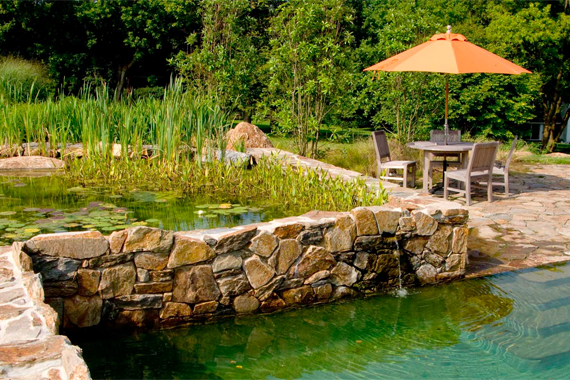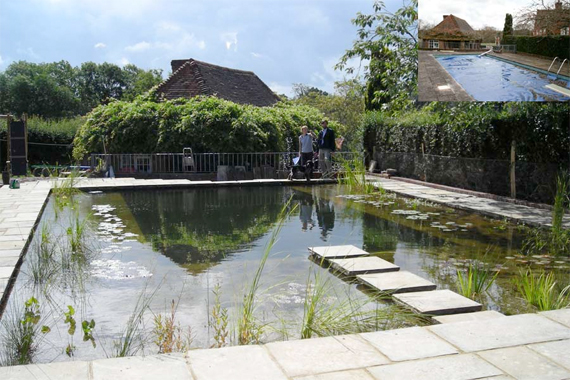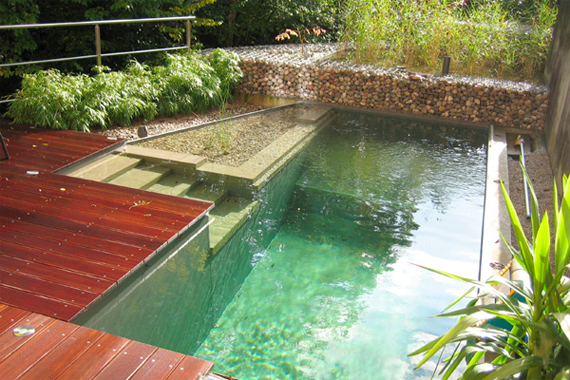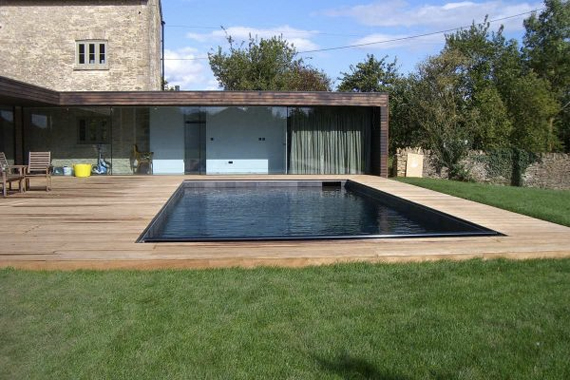



Natural pools use one of two types of biological filters to create water that’s clear, clean, and chemical-free. Water is circulated by pump through either a gravel filter or a plant filter, depending on your preferences and, to some degree, your climate (gravel filters are better in warmer climates). Maintenance is easy: Once a month, remove any loose sediment with a pool vacuum cleaner.
Sterilized soil is good for the plant pond, but for the swimming pool, you can use concrete, a synthetic or rubber liner, or bentonite clay. At about 35 cents per sq. ft. (not installed), a 3-inch-thick layer of waterproof bentonite is the cheaper option. Adding 3 to 4 inches of pre-washed gravel to the bottom of your plant pond provides a habitat for beneficial bacteria that biodegrade any organic materials.
Most natural swimming pools feature two connected pools — one for swimming, and a shallow pool to hold plants. The root structures of aquatic plants — cattails, water lilies, and duckweed — remove bacteria and other contaminants. Check your state extension service for localized water plants.